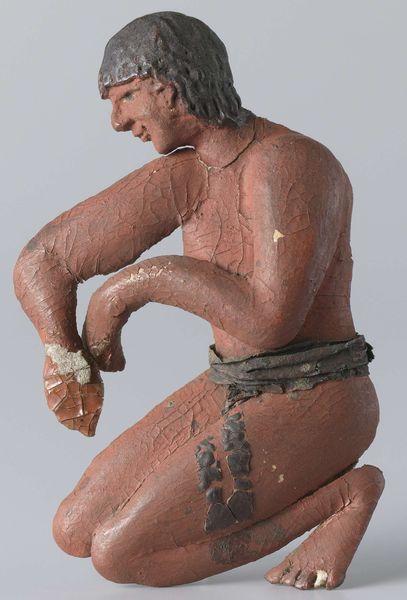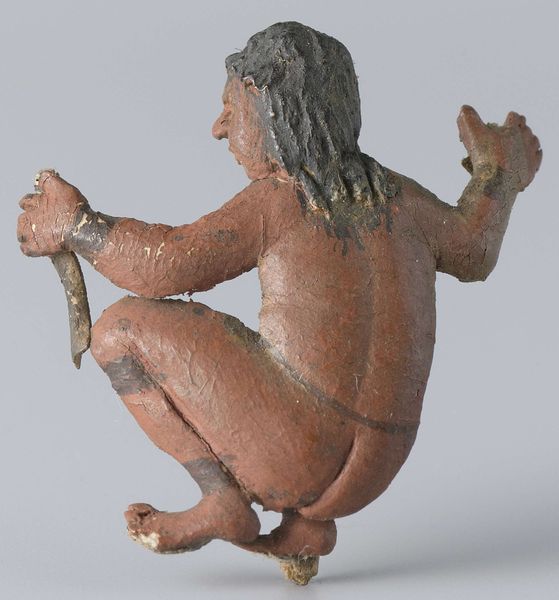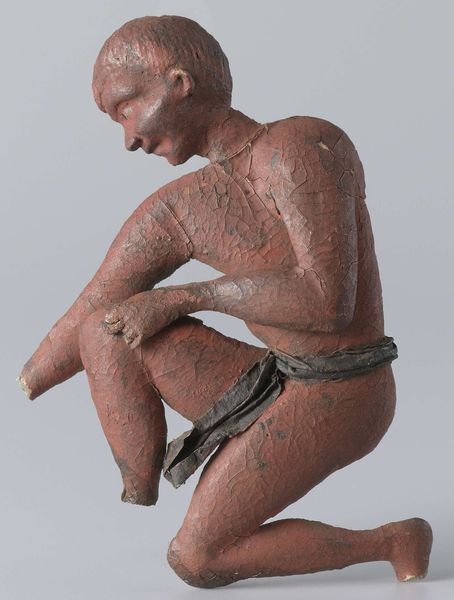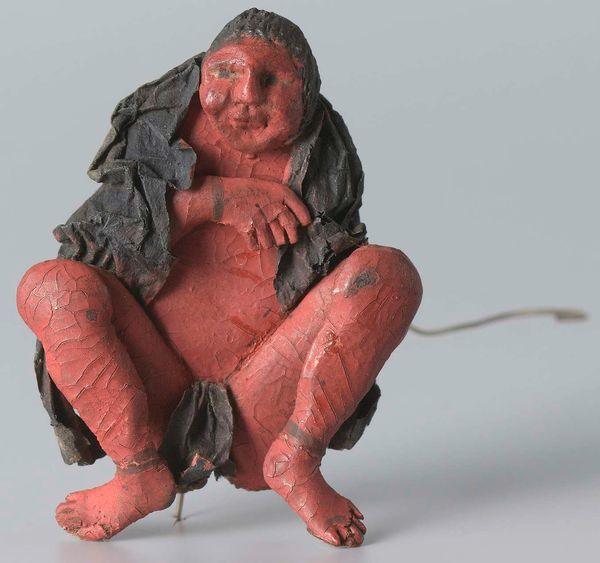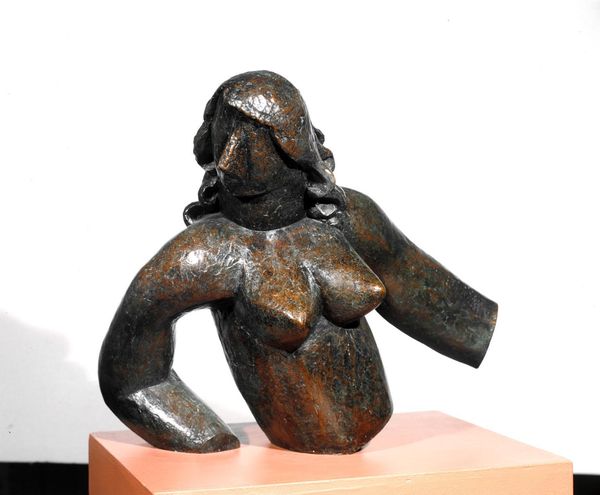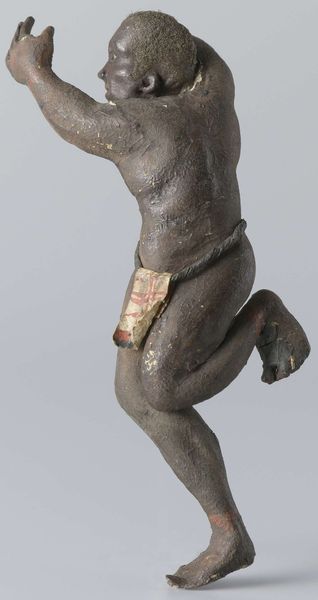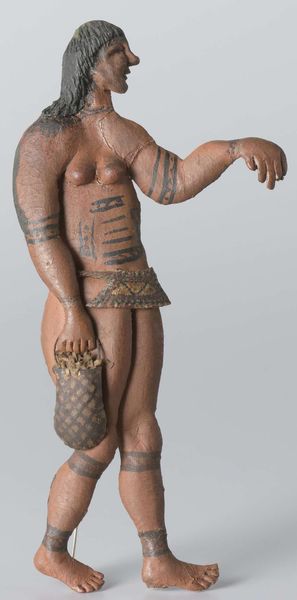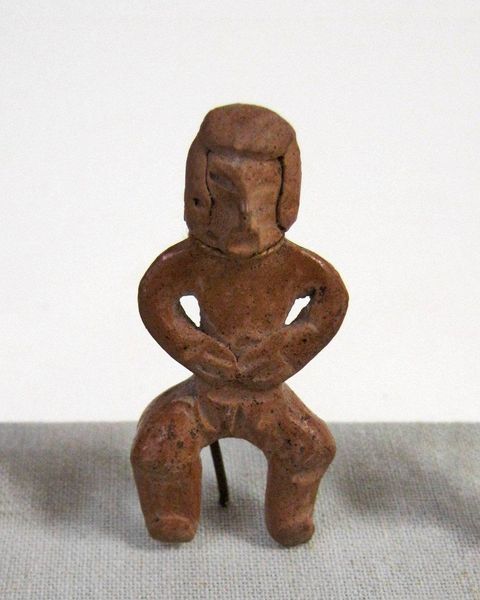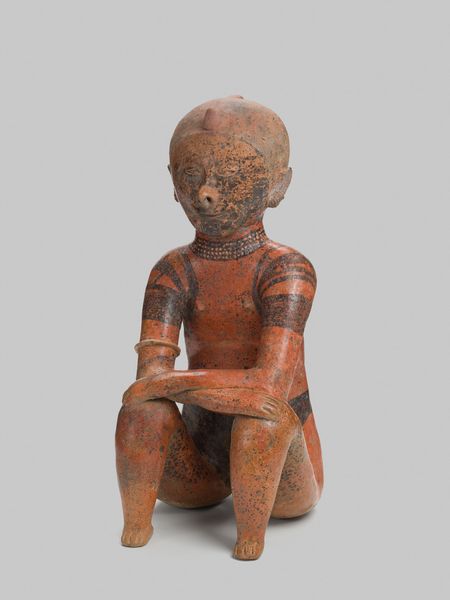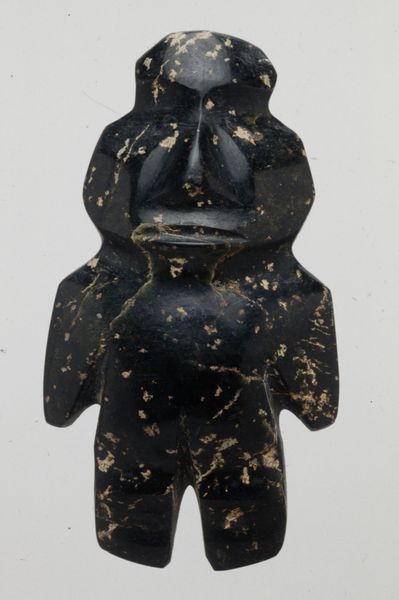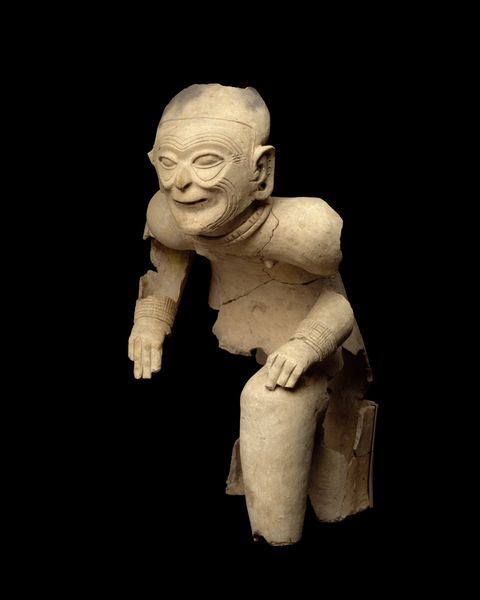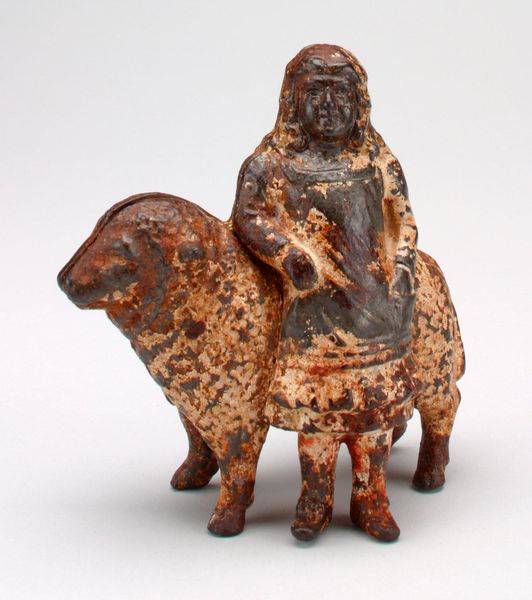
sculpture, papier-mâché
#
sculpture
#
figuration
#
sculpture
#
papier-mâché
#
indigenous-americas
Dimensions: height 4.2 cm, width 4.7 cm
Copyright: Rijks Museum: Open Domain
Curator: I find the visual textures in this sculpture truly captivating. Editor: It evokes a profound sense of stillness and perhaps, introspection. A figure in quiet repose. Curator: Indeed. The piece we're looking at is titled "Zittende Caraïb," or "Seated Carib," attributed to Gerrit Schouten and crafted before 1839. Its presence, especially given the likely techniques, begs further examination. The base materials are visibly worked and sculpted, offering insight into pre-industrial processes of artmaking. Editor: It invites questions around representation and colonial dynamics, doesn't it? A pre-colonial subject rendered through the eyes and hands of a colonial context. How does this impact the sculpture’s reception? I wonder what level of agency the sitter, or their community, had in their depiction. Curator: Absolutely, thinking critically about this, one notices how material selection played a significant role here. Schouten used, essentially, carving in a fashion, allowing both malleability for detailing but also contributing to a symbolic permanence that connects directly to ideas of "indigenous" cultural artifact, but crafted by an outsider. The very means of production complicate any essential reading. Editor: It feels so important to understand Schouten’s own socio-political standing in order to better discern the motivations behind this particular piece. Whose gaze is truly represented, and for whom was this made? And considering its age, how has our own understanding of its image been affected by the passage of time and changes in academic perspective? Curator: These are crucial questions. For the time, objects like this had clear value. The interplay of different applied pigments speaks to a specific understanding of materials science on Schouten's part, but we must also acknowledge its connection to the economy of raw matter, extraction, and global distribution, particularly as that system fueled empire. Editor: A visual artifact deeply embedded in networks of power. Ultimately, understanding these threads leads to a much more complex view. Curator: Agreed. And I think that brings new understandings when engaging with pieces that are so tied to histories of making. Editor: Precisely. An enduring and, hopefully, instructive encounter.
Comments
No comments
Be the first to comment and join the conversation on the ultimate creative platform.
